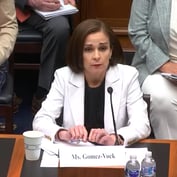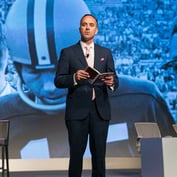Twenty-five years ago, a big life insurer might have offered an annuity.
The annuity could help someone save for retirement.
Now, Steve Scanlon says, life insurers are moving beyond the time when the individual retirement toolbox held one big, heavy, all-purpose hammer.
“This is not the annuity of 1995,” Scanlon said earlier this month, in an interview. “It’s no longer one-size-fits-all.”
What It Means
Scanlon is the head of individual retirement at Equitable, which has been one of the top U.S. life insurers since 1859. It has helped develop the modern U.S. annuity market, including the market for registered index-linked annuities.
Scanlon’s job gives him a window with a view of the insides of the American financial planning machinery.
Last summer, he was focusing on the need for flexibility to help people get past the effects of the COVID-19 pandemic.
Now, he’s talking not just about the idea of flexibility, but the wider range of tools available to meet a wide and growing range of client needs.
Inside the Planning Clockwork
Here are five things Scanlon is saying about annuities and retirement planning now.
1. The world has changed.
Last summer, Scanlon saw the retirement planning community starting to get over the COVID-19 pandemic, and to get past the brief period of pandemic-related volatility that occurred in the spring of 2020.
Now, he said, “you have interest rates going up. You have inflation. We haven’t talked about inflation in 20 years.”
Meanwhile, he said, volatility is still there.
Scanlon is working with a fairly stable group of advisors, with an influx of new advisors offsetting advisor outflow.
One challenge is that many of the new advisors have entered the financial services sector after the 2007-2009 Great Recession.
“They haven’t seen a bear market yet,” Scanlon said.
2. Advisors’ role is evolving.
Scanlon talks to some agents and advisors who continue to focus on traditional retirement, insurance and financial sales and planning tasks.









 May 17, 2022 at 01:19 PM
May 17, 2022 at 01:19 PM










